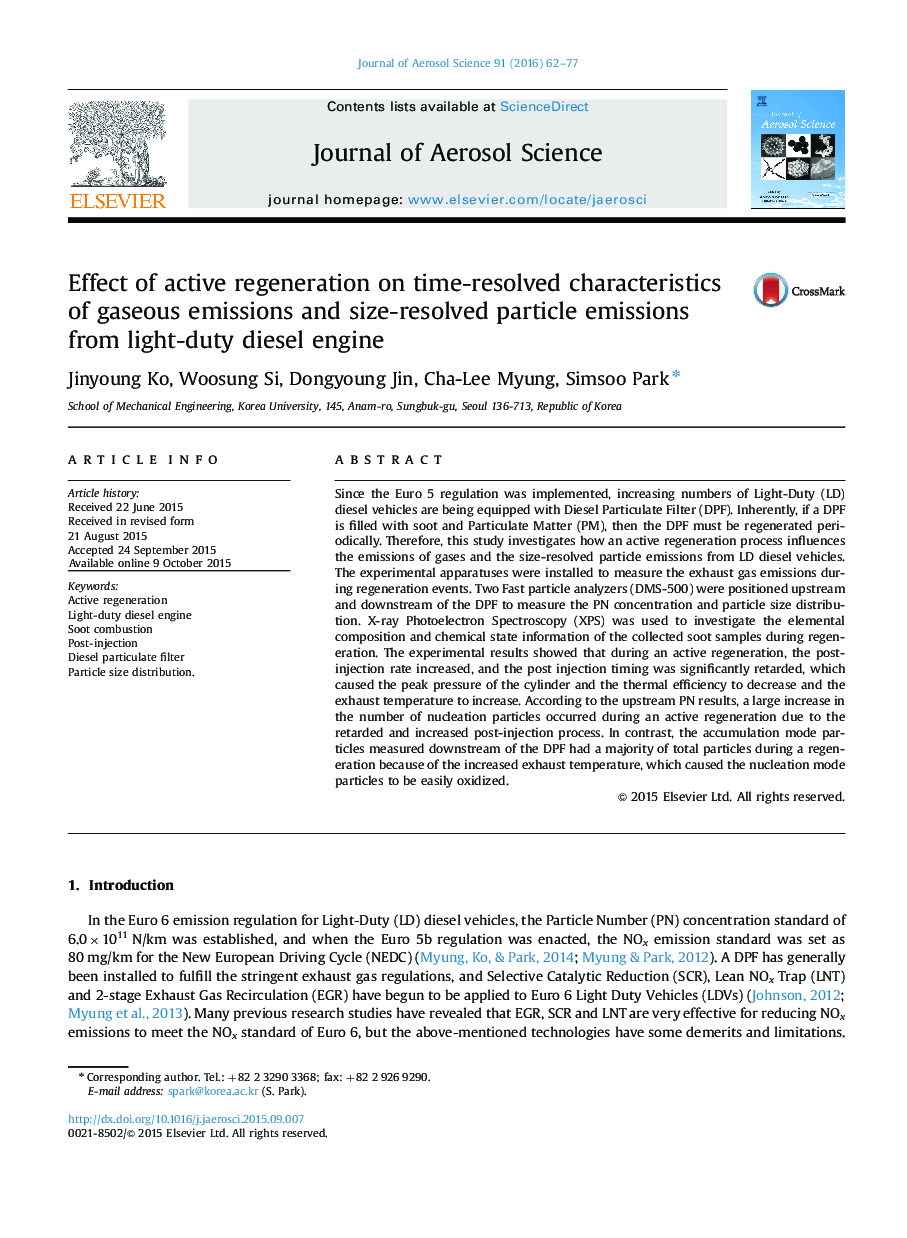| کد مقاله | کد نشریه | سال انتشار | مقاله انگلیسی | نسخه تمام متن |
|---|---|---|---|---|
| 4452226 | 1620732 | 2016 | 16 صفحه PDF | دانلود رایگان |
• Gaseous and PM emissions from diesel engine were examined during DPF regeneration.
• Fast particle analyzers, PM sampler, and XPS were used for PM characteristics.
• Post-injection strategy was the main parameter for engine performance and emissions.
• Nucleation particles were strongly increased at DPF upstream during regeneration.
• Sulfur was detected from the soot sample by XPS.
Since the Euro 5 regulation was implemented, increasing numbers of Light-Duty (LD) diesel vehicles are being equipped with Diesel Particulate Filter (DPF). Inherently, if a DPF is filled with soot and Particulate Matter (PM), then the DPF must be regenerated periodically. Therefore, this study investigates how an active regeneration process influences the emissions of gases and the size-resolved particle emissions from LD diesel vehicles. The experimental apparatuses were installed to measure the exhaust gas emissions during regeneration events. Two Fast particle analyzers (DMS-500) were positioned upstream and downstream of the DPF to measure the PN concentration and particle size distribution. X-ray Photoelectron Spectroscopy (XPS) was used to investigate the elemental composition and chemical state information of the collected soot samples during regeneration. The experimental results showed that during an active regeneration, the post-injection rate increased, and the post injection timing was significantly retarded, which caused the peak pressure of the cylinder and the thermal efficiency to decrease and the exhaust temperature to increase. According to the upstream PN results, a large increase in the number of nucleation particles occurred during an active regeneration due to the retarded and increased post-injection process. In contrast, the accumulation mode particles measured downstream of the DPF had a majority of total particles during a regeneration because of the increased exhaust temperature, which caused the nucleation mode particles to be easily oxidized.
Journal: Journal of Aerosol Science - Volume 91, January 2016, Pages 62–77
